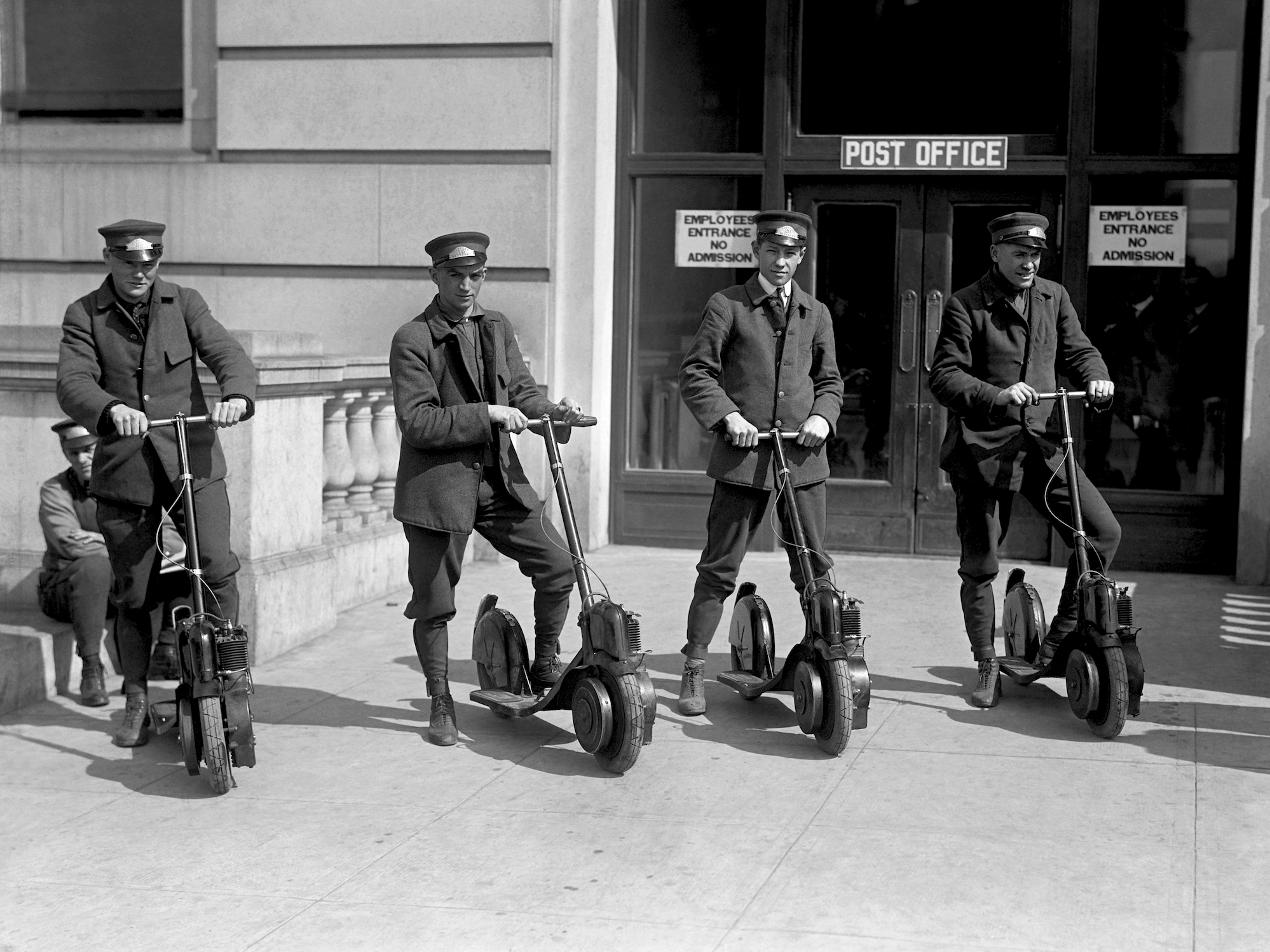- The US Postal Service dates back to 1775.
- Since then, postal workers have been bringing people their mail through various modes of transportation, including horse-drawn carriages, sleds, and scooters.
- Postal worker uniforms have changed over time from suits to polo shirts and shorts.
- Visit Insider’s homepage for more.
In 1775, Benjamin Franklin was appointed the first Postmaster General.
Since then, postal workers have been delivering mail on bikes, scooters, motorcycles, cars, wheelbarrows, sleds, and other modes of transportation. Their uniforms have also evolved from full suits with top hats to casual polo shirts and shorts.
The US Postal Service is more crucial than ever during the coronavirus pandemic, when many will be voting by mail in the 2020 presidential election.
Here are 30 vintage photos of postal workers on the job.
Pneumatic mail tubes (PMT) were introduced in Philadelphia in 1893.

Pneumatic mail tubes were usually 8 inches in diameter and were used to carry mail in bulk between sorting offices. Canisters could hold up to 600 letters, according to the National Postal Museum.
Postal workers used horse drawn carriages in the early 1900s.

A mailman in Elmira, New York, wore overalls as his postal uniform.
In the winter, the horses pulled sleighs.

Winter snow was no match for their sleighs.
Horses then started pulling larger mail vans called screen wagons.

The screens kept the mail from falling off.
Motor vehicles slowly started replacing wagons.

Electric, steam, and gasoline-powered cars were all popular until Henry Ford's Model T car monopolized the market.
Parcel Post trucks began service in 1913 and were an instant hit.

According to the USPS, the Parcel Post delivered 300 million parcels in the first six months.
Mail delivery scooters also had a moment.

Four special delivery postmen for the US Postal Service tried out new scooters in the mid-1910s.
Post office engineer Roy J. Joroleman invented tunnel-shaped mailboxes in 1915.

Post office wagons advertised the new and improved mailboxes.
In the 1920s, motorcycles became a popular way to collect and deliver mail.

A rural postal mail carrier in Newell, South Dakota, wore a hat and overalls while riding his Wagner 4-11 motorcycle.
Postal worker uniforms used to be formal suits and collared shirts.

It was also the decade of short flapper hairstyles for women.
Postal clerks in New York City wore vests and ties in the 1930s.

Postal clerks sorted envelopes containing bonus bonds for World War I veterans at the General Post Office in New York City.
In Chicago, postal workers wore caps and overalls.

Postal workers sorted packages in the main mail facility in Chicago, Illinois.
More women became postal workers during World War II.

Two members of the Women's Army Corps worked on identifying incorrectly addressed mail for soldiers in Camp Breckinridge, Kentucky.
In postal services abroad, some women didn't have uniforms.

In Luton, England, women wore armbands reading "Post Office Postman" since there were no uniforms available for them during World War II.
Mailmen wore fur hats to stay warm in the 1940s.

Rural mailman Mark Whalon made his rounds in sub-zero weather.
Horse-drawn sleds were still in use in rural areas in the 1950s.

Postman Arthur LeBlanc from Berlin, New Hampshire, delivered mail from his horse-drawn sled circa 1950.
Postal workers also became characters in film and television.

Actress Loretta Young got a letter from actor Irving Bacon in the film "Cause for Alarm!"
Even in heat waves, postal workers made sure mail was picked up and delivered.

A mailman collecting mail during a heatwave in 1954 sweats through his uniform.
It seems people have always pushed off doing their taxes until the very last second.

A postman stationed outside a post office in Washington collected tax returns from drivers rushing to beat the midnight deadline in 1965.
A 1931 mail truck was brought back into use in 1976 for nostalgia's sake.

Dwayne Cavanar (pictured) delivered mail from a similar truck between 1946 and 1951.
Postal workers didn't have to be in uniform all the time, though.

A postal worker placed envelopes into slots in 1978.
John Ratzenberger played mailman Cliff Clavin on "Cheers" in the '80s and early '90s.

The episode "Cliff's Rocky Moment" aired in 1984.
Mail wheelbarrows were used in the '80s through the present day.

United States Postal Service worker John Hallinan walked through pouring rain in Exeter, New Hampshire, in 1981.
Postal workers in Florida wore short-sleeved shirts and blue pants to match their blue bicycles in the 1980s.

A postal worker in St. Petersburg, Florida, matched his bicycle.
Beneath the collared shirts, postal workers wore T-shirts.

A postal employee sorts parcels in a warehouse in 1988.
In the '90s, postal workers wore blue cardigans and baseball caps.

Postal worker Forest Catron greeted Sissy the dog in 1996.
Some mailmen in California got creative with their headgear during the '90s.

Mailman Bob Tattsuke and Lee Levey chatted in Mar Vista, California, in 1996.
Female postal workers wore the cardigans, too.

Ella Mae Burtis worked in uniform at a post office in Lothian, Maryland.
The blue striped shirts that postal workers wore in the late '90s bore the logo of the USPS.

Postal workers learned to drive on Driver's Confidence Training Courses in 1998.
Whether they sort the mail in warehouses or deliver it to homes, postal workers offer an important public service.

The USPS is experiencing financial woes due to the COVID-19 pandemic as Congress votes on a $25 billion emergency funding grant to keep it functioning for the election in November.
Read more:

